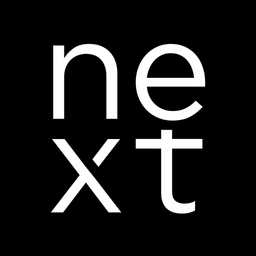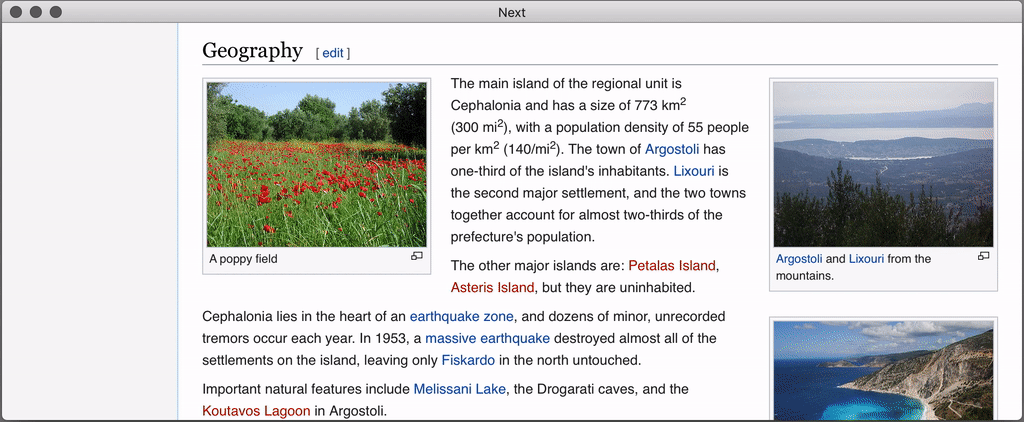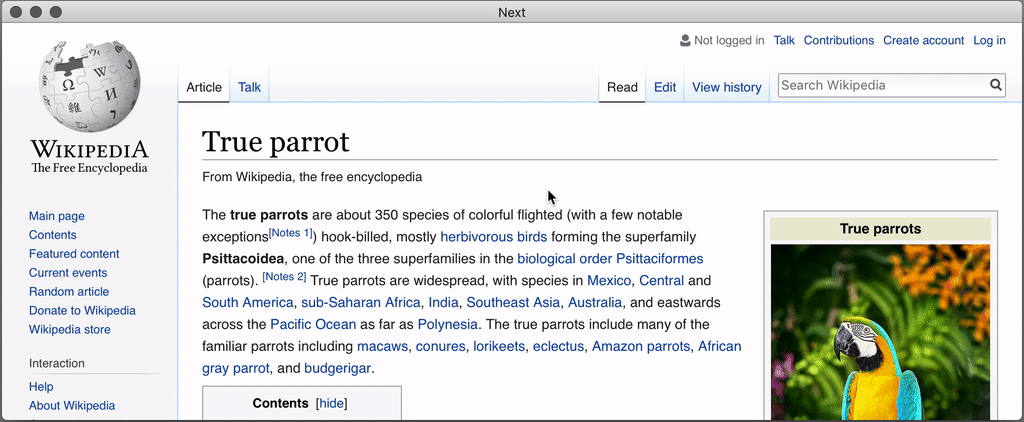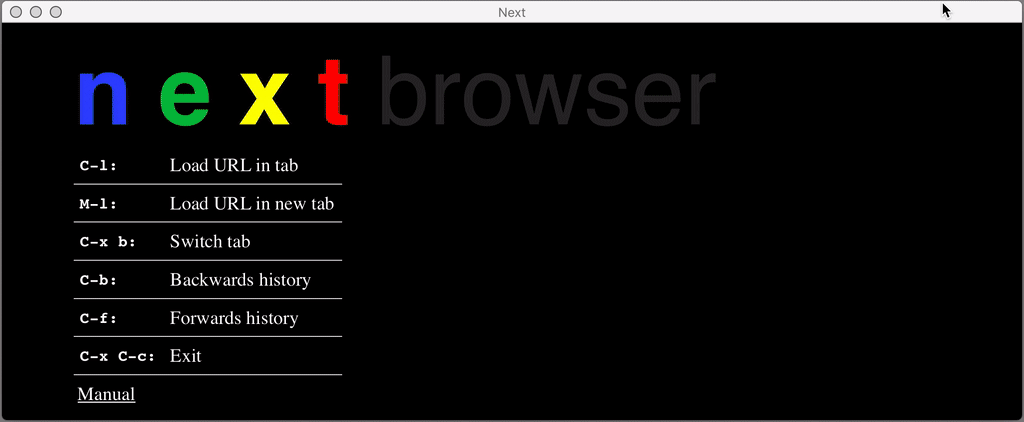Next is a keyboard-oriented, extensible web-browser designed for power users. The application has familiar key-bindings, is fully configurable and extensible in Lisp, and has powerful features for productive professionals.
Next includes many features designed to enable you to focus on being productive. A few of them are demonstrated below.
Switch easily between your open tabs by fuzzy search. If you are
looking for https://www.example.com, you could type in ele, exa,
epl, and any other valid series of letters.
History is represented as a tree that you can traverse. More complex than the “forwards-backwards” abstraction found in other browsers, the tree makes sure you never lose track of where you’ve been.
In the example below, the User performs the following actions:
- Starts page
True Parrot - Visits page
Gray Parrot - Returns to page
True Parrot - Visits page
Budgerigar - Returns to page
True Parrot - Executes
forwardskeybind in history
It is at this point that a normal browser would NOT be able to
navigate you forwards to your visit of Gray Parrot. Instead of
erasing your history, Next offers smart navigation and prompts the
user. Do you wish to go forwards to Gray Parrot or to
Budgerigar?
Next is lightweight and fast. The interface does not get in your way, and everything can be done by keyboard. You are free to fully focus on your task unburdened by cumbersome UI.
Link Hints provide you with the ability to instantly jump to any link on the page, or even open it in a new tab.
Fuzzy completion means intelligent completion. Find your bookmarks, open up new links, or switch tabs with the power of fuzzy completion.
See the downloads page for pre-built binaries. Some operating systems provide packages for Next:
- Arch Linux AUR
- Guix: Install with
guix package --install sbcl-next.
Guix is a package manager that can be installed on any GNU/Linux distribution; should Next be missing from your distribution, there is always the possibility to install Guix on your system and use it to install Next.
- If Guix is easily available for your distribution (e.g. as a package), then this is definitely the simplest route.
- If not, or if you want to help developing Next, then building from source is the commended route.
To perform an installation from source, please see the developer readme.
C-l: Load URL in tabM-l: Load URL in a new tabC-x b: Switch tabC-b: Backwards historyC-f: Forwards historyC-x C-c: Quit
The following keys exist as special keys:
C: Control KeyS: Super (Windows key, Command Key)M: Meta (Alt key, Option Key)
Customization is possible through the creation of a
~/.config/next/init.lisp file. From here you
can override and redefine any of the functions by defining your init
file as part of the :next package. For more information please see:
customizing Next.
Additionally, a document provided in the documents directory named EXTENSION.org is a place for the community to share helpful customizations. To share your own extension, please make a pull request with your new extension appended to EXTENSION.org.
For full documentation about Next, how it works, and how to extend it please see the user manual.
See CHANGELOG.org.



